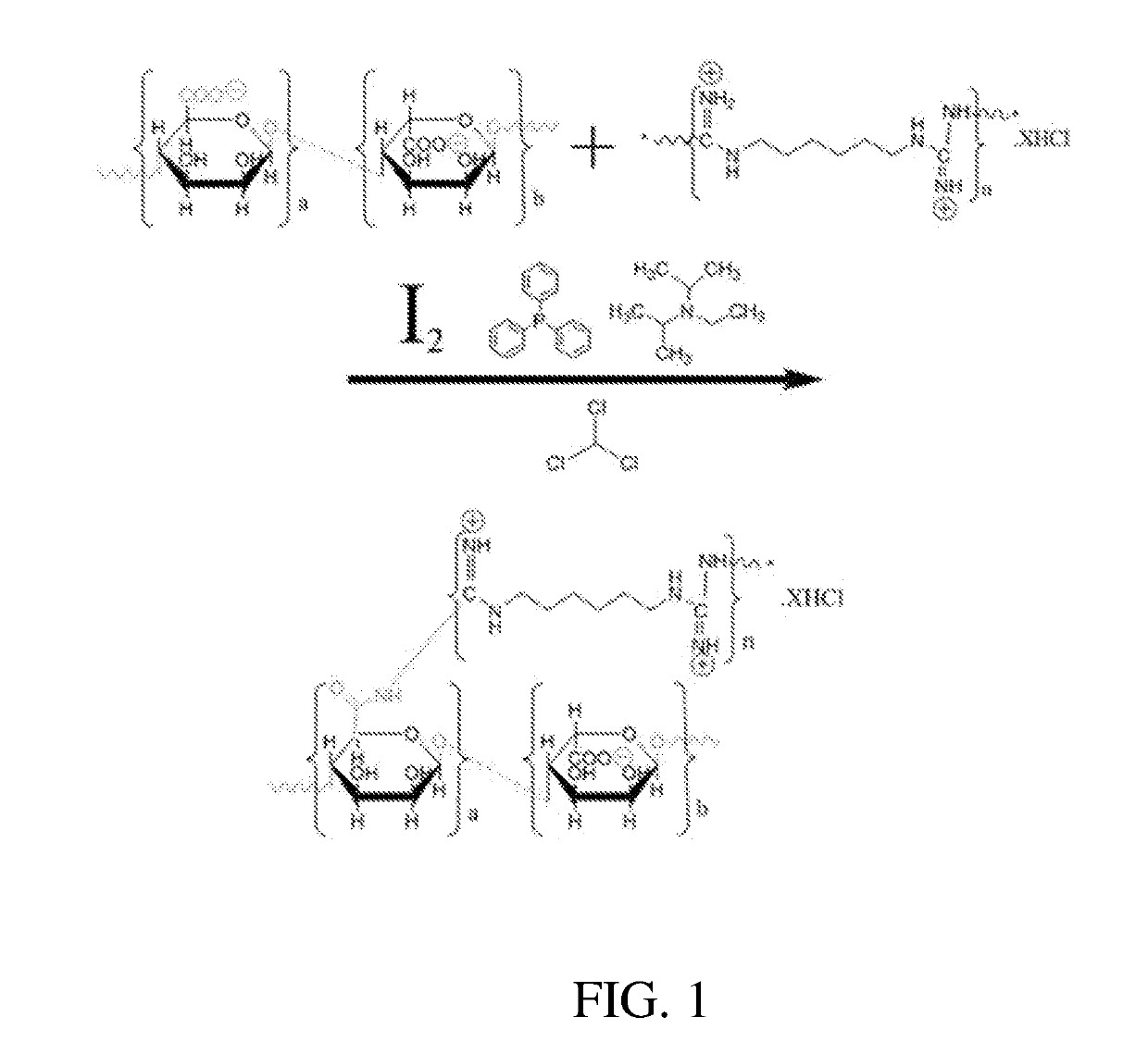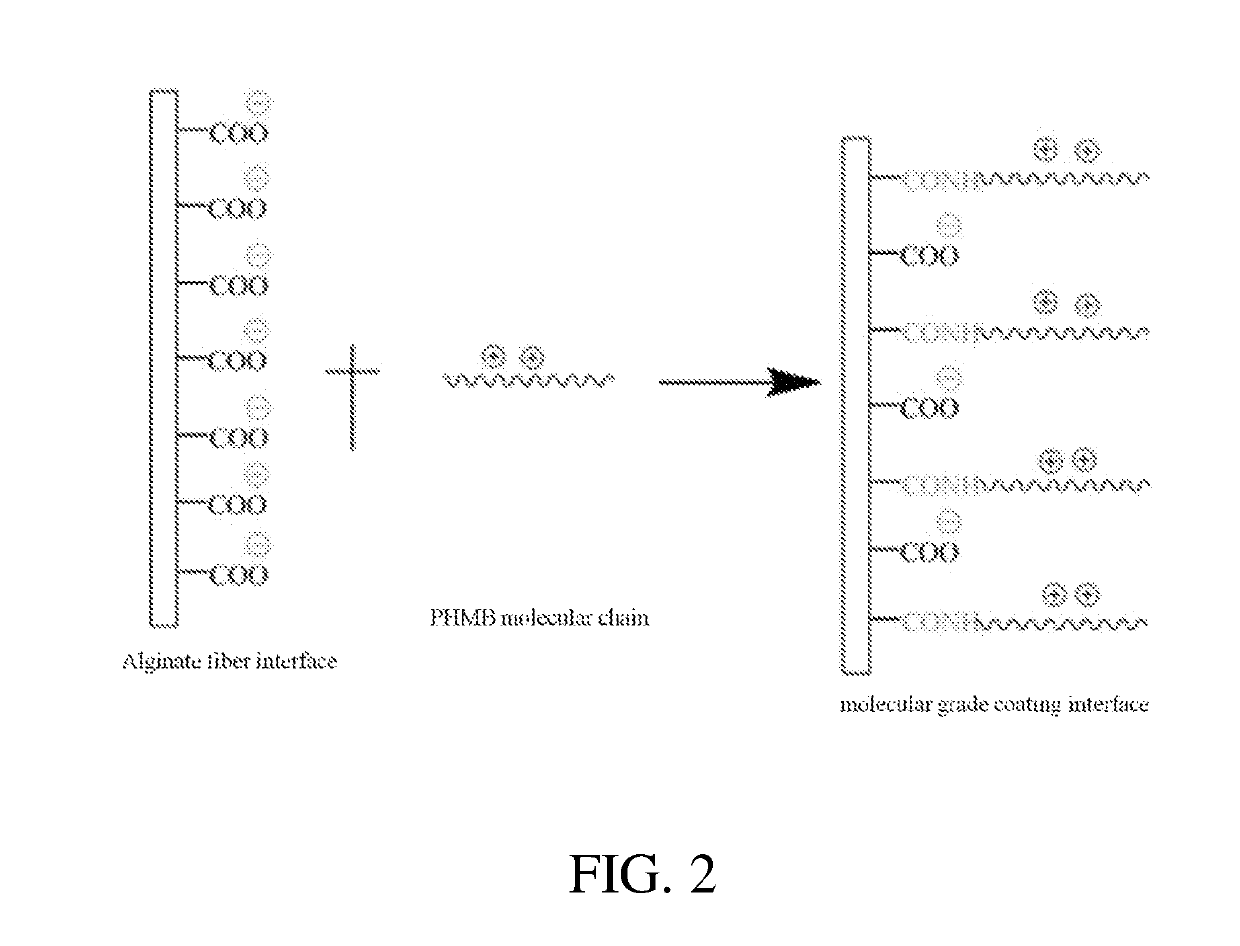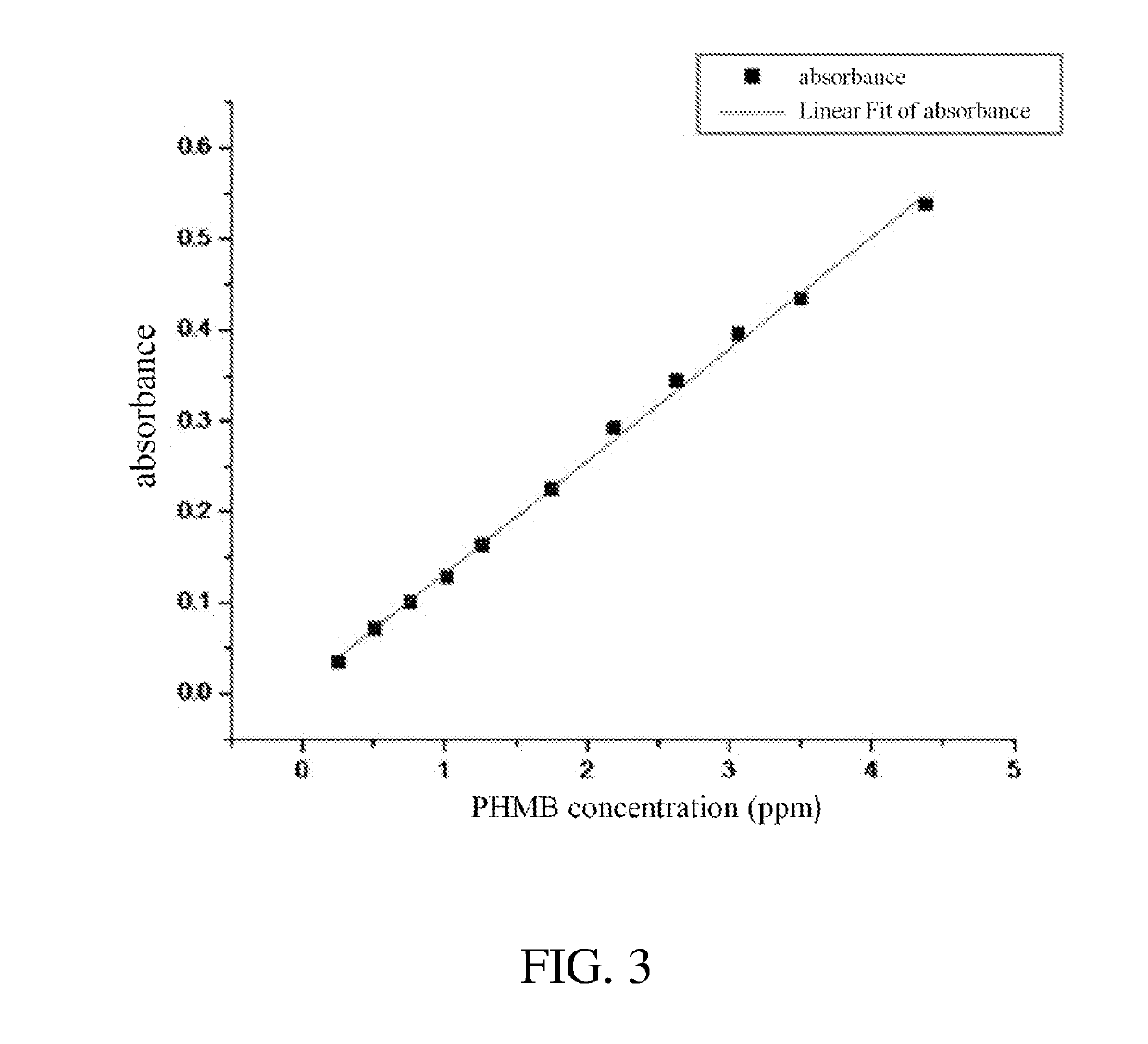Antimicrobial alginate fiber, and preparation method for and use of dressing thereof
- Summary
- Abstract
- Description
- Claims
- Application Information
AI Technical Summary
Benefits of technology
Problems solved by technology
Method used
Image
Examples
embodiment 1
[0060]A method is provided for manufacturing an antimicrobial alginate fiber dressing. A short alginate fiber with length of 3 to 5 cm is provided with 1000 g, and is placed into 5000 g of aqueous solution containing 0.54% of hydrochloric acid and 9.5% of ethanol, at 20° C. The solution with the alginate fiber is stirred and activated for 3.0 hours, and then the alginate fiber is separated from the aqueous solution by centrifuge. The alginate fiber may be soaked with 2000 g of absolute ethanol for 10 to 15 minutes, and then ethanol is separated by centrifuge to obtain a primary activated alginate fiber. 110 g of N,N-diisopropylethylamine is added into 5500 g of chloroform solution (triphenylphosphine: 0.235%, and iodine: 0.228%) with stirring at 70 r / min, and the stirring time is counted by a timer. After stirring for 1-2 minutes, the primary activated alginate fiber is put into the chloroform solution. The chloroform solution may be stirred for 3 to 5 minutes, and then is activated...
embodiment 2
[0062]A method is for manufacturing an antimicrobial alginate fiber dressing. A short alginate fiber with length of 3 to 5 cm may be provided with 1000 g, and is placed into 5000 g of aqueous solution containing 0.54% of hydrochloric acid and 9.5% of ethanol, at 20° C. The alginate fiber in the aqueous solution is stirred and activated for 3.0 hours, and then the alginate fiber is separated from the aqueous solution by centrifuge. The fiber alginates may be then soaked with 2000 g of absolute ethanol for 10 to 15 minutes, and the ethanol is separated by centrifuge to obtain a primary activated alginate fiber. 110 g of N,N-diisopropylethylamine is added into 5500 g of chloroform solution (triphenylphosphine: 0.235%, and iodine: 0.228%) with stirring at 70 r / min, and the stirring time is counted by a timer. After stirring for 1-2 minutes, the primary activated alginate fiber is placed into the chloroform solution. The alginate fiber in the chloroform solution is stirred for 3 to 5 min...
embodiment 3
[0064]A method is for manufacturing an antimicrobial alginate fiber dressing. A long alginate fiber is provided with 1000 g, and is placed into 5000 g of aqueous solution containing 0.54% of hydrochloric acid and 9.5% of ethanol, at 20° C. The alginate fiber in the aqueous solution is stirred and activated for 3.0 hours, and then the alginate fiber is separated from the aqueous solution by centrifuge to remove liquid. The alginate fiber may be soaked with 2000 g of absolute ethanol for 10 to 15 minutes, and then ethanol is separated by centrifuge to obtain a primary activated alginate fiber. 110 g of N,N-diisopropylethylamine is added into 5500 g of chloroform solution (triphenylphosphine: 0.235%, and iodine: 0.228%) with stirring at 70 r / min, and the stirring time is counted by a timer. After stirring for 1-2 minutes, the primary activated alginate fiber is placed into the chloroform solution. The chloroform solution is stirred for 3 to 5 minutes, and then the primary activated alg...
PUM
| Property | Measurement | Unit |
|---|---|---|
| Temperature | aaaaa | aaaaa |
| Temperature | aaaaa | aaaaa |
| Temperature | aaaaa | aaaaa |
Abstract
Description
Claims
Application Information
 Login to View More
Login to View More - R&D
- Intellectual Property
- Life Sciences
- Materials
- Tech Scout
- Unparalleled Data Quality
- Higher Quality Content
- 60% Fewer Hallucinations
Browse by: Latest US Patents, China's latest patents, Technical Efficacy Thesaurus, Application Domain, Technology Topic, Popular Technical Reports.
© 2025 PatSnap. All rights reserved.Legal|Privacy policy|Modern Slavery Act Transparency Statement|Sitemap|About US| Contact US: help@patsnap.com



